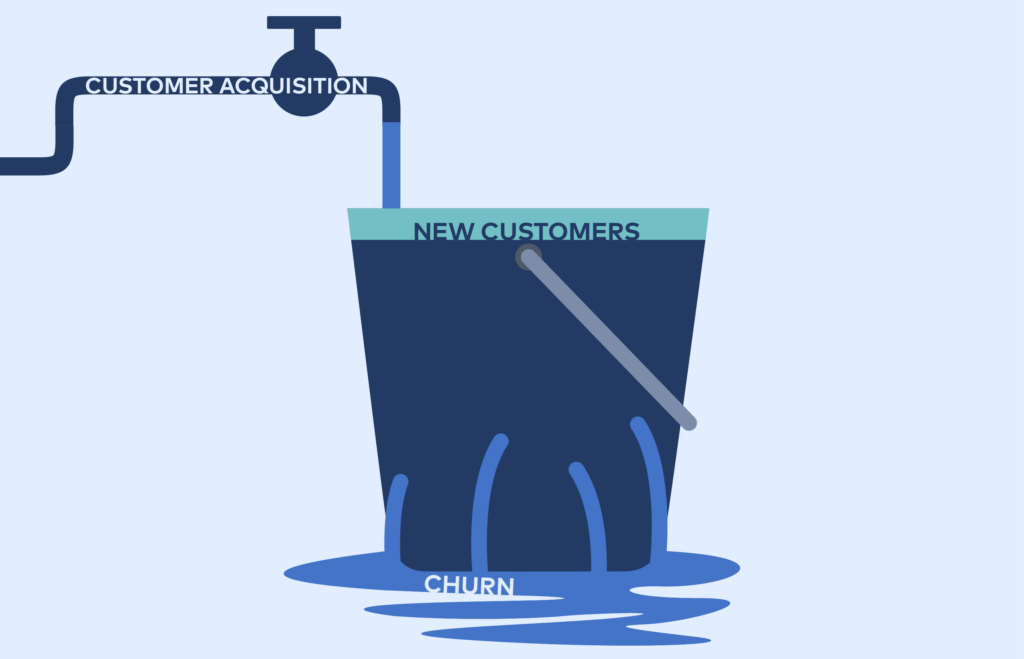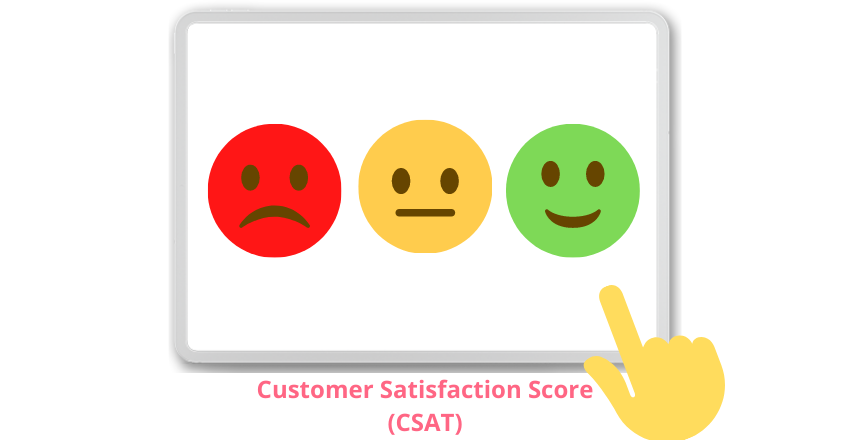Page Contents
eCommerce metrics must be tracked to ensure the success of businesses in this sector. These parameters provide you with a thorough understanding of your company’s success factors. Moreover, they allow you to make crucial changes in your operations to meet strategic objectives.
Finding and tracking the appropriate eCommerce KPIs are the prerequisites for making educated business decisions.
They include areas such as sales and conversions to marketing and customer support. The key eCommerce website metrics are web traffic, conversion rate, shopping cart abandonment rate, and net promoter score. However, there are more metrics that you can track to grow your online store.
In this article, you’ll discover how to monitor these eCommerce KPIs and achieve unique strategic goals. But, before jumping into the list of metrics, let’s focus on why eCommerce metrics matter.
5 Reasons Why eCommerce Success Metrics Are So Important
eCommerce website owners want to boost sales rates and income while still providing customers with a good shopping experience.
This can be challenging if you don’t have clear goals for pricing, promotion, customer support, shipping, and other significant aspects.
Tracking KPIs are essential for your online store in 2021, and here’s why:
1. eCommerce Metrics Help Measuring Growth
KPIs offer an instant snapshot of the company’s overall results. You get a better perspective of your market by keeping yourself focused on calculating priorities and expectations using KPIs.
Thus, you can gauge the development of your business by making changes before falling too far behind your targets.
2. eCommerce Metrics Boost Revenue
Many eCommerce KPIs would be related to monitoring and increasing revenue. There are KPIs that you can use to measure online sales success. In a customer-centric marketing strategy, it is necessary to use these key eCommerce metrics to impress visitors and boost revenue.
3. eCommerce Metrics Provide Data-driven Insights
eCommerce businesses gauge metrics to access data that will help them make educated decisions.
Data-driven insights assist you with strategic choices based on reliable data that precisely depict the steps to boost your business.
4. eCommerce Metrics Enhance Business Relationships
Using essential eCommerce metrics can encourage workers, besides providing them with an awareness of the company’s priorities. So, once your team realizes this, they can outperform customer service KPIs and further assist buyers.
5. eCommerce Metrics Keep You on Track
Using a variety of KPIs provides you with the necessary knowledge to solve challenges and seize opportunities. For example, if you’re experiencing a revenue slowdown, consider a few key performance indicators (KPIs) that will help you reverse the trend.
Interestingly, KPIs are one of the most impacting strategies for keeping the team engaged, responsible, and aligned.
4 Top eCommerce KPIs
Keeping an eye on eCommerce digital marketing KPIs is vital to its success. Any key performance metric should be:
- Vital to reaching goals
- Measurable and specific
- Relevant to your business
Now that we know what qualities a key performance indicator must have, let’s check out the KPIs of eCommerce businesses:
-
Sales KPIs
Sales KPIs of an eCommerce provide a clear overview of the company’s performance that contributes to conversion and revenue.
Following are the most important sales metrics you should measure in 2021 to improve your sales decisions:
-
Conversion Rate
The conversion rate in eCommerce is the percentage of visitors or email subscribers that make a transaction and become a buyer. Hence, you should keep track of this metric for your eCommerce website and apply strategies to optimize your conversion rate.
For example, if you have 5,000 visitors and 250 were converted into paying customers, your conversion rate equals 5%.
Conversion Rate = (250 ÷ 5,000) X 100% = 5%
-
Cost of Goods Sold
The cost of goods sold is the direct cost of labor and material involved in producing these products or services.
-
Customer Lifetime Value
CLV or customer lifetime value (also called LTV) is a metric to evaluate retained customers’ purchase values over time.


Image credits: bayleafdigital.com
As an example of calculating CLV, suppose that you have spent $1,200 to acquire a customer. The customer provides your business with yearly revenue of $1,000 and has been with you for 3 years. Then, the CLV for this customer is calculated as:
CLV = ($1000 X 3) – $1200 = $1800
CLV is a parameter to help you boost your existing customer value.
-
Revenue per Visitor
Revenue per visitor or RPV is an eCommerce metric that measures the value of each visit to your website.
Divide the total revenue of a customer in a period by the number of visits in the same period to calculate RPV.
-
Churn Rate
Churn rate is a metric to measure what percentage of customers quit your brand.


Image credits: pakman.com
Suppose that you have 1,000 customers at the beginning of a month. Then, 200 of them have left your brand by the end of the month. So, your churn rate is:
Churn Rate = (150 ÷ 1000) X 100% = 15%
2. Marketing KPIs
These KPIs gauge the performance of your online shop compared to marketing targets. Let’s find out which important marketing metrics you should have an eye on in 2021:
-
Web Traffic
The number of visitors to your website is referred to as website traffic. This is a standard approach to assessing an online business’s ability to draw in visitors.
-
Bounce Rate
Bounce rate is the percentage of visitors who leave a site without taking any action. These actions include signing up, purchasing, clicking on a link, etc., on your eCommerce website.


Image credits: seranking.com
-
Shopping Cart Abandonment Rate
The shopping cart abandonment rate refers to users who add goods to their shopping cart but leave the website purchasing.
Customers abandon shopping carts for several reasons, including high shipping costs, confusing checkout procedures, and hidden charges.
Your website’s usability and UX can be the issue if your eCommerce business has a high shopping cart abandonment rate. To find out if that is the case with your website, you can use a session replay service.
Session replay enables you to watch every movement of visitors live on your website without breaking any privacy policy. This way, you can better understand what they go through to finalize and pay for an order.
3. Customer Satisfaction KPIs
Customer satisfaction is of high importance in the competitive business world of today. Therefore, you should provide an exceptional customer experience to win the heart of your customers over the competition in 2021.
As the name reveals, customer satisfaction KPIs measure customer satisfaction metrics concerning the business goals.
-
Net Promoter Score
The net promoter score or NPS represents consumers’ likelihood to recommend a company’s goods or services to others. This provides internal insight into the customers’ interactions and engagement.
You can measure the NPS metric by simply asking customers how likely they are to recommend you to a friend. Allow them to score you on a scale of 0-10, where 0 means the minimum likelihood and 10 shows the maximum probability of a recommendation.
Consider other business data with the NPS metric for precise customer experience insights.
-
Customer Satisfaction Score
The customer satisfaction score or CSAT is usually used to measure short-term loyalty among customers. For example, you can ask the customers a question like “How would you describe your experience with us?”


After gathering customer responses, you can measure the CSAT metric. For example, if you could collect 1,200 responses, and 750 were positive, then your CSAT is:
CSAT = (750 ÷ 1200) X %100 = %62.5
-
Customer Resolution Time
Customer resolution time, also referred to as CRT, is a metric that gauges the time your support team needs to solve a customer’s problem.
The CRT is calculated as dividing the total resolution time by the sum of resolved requests.
4. Shipping and logistics KPIs
Shipping KPIs are the core of how consumer engagement can grow from when customers place an order to when it is shipped and delivered.
-
Inventory Turnover Rate
Inventory turnover rate is the number of times inventory is sold and replaced in a given period.
It is a key indicator of product efficiency contributing to warehousing costs and revenue. Moreover, it can be compared to other firms in a particular sector or your other products.
So, divide the cost of sold goods by the average inventory value in a specific period.
-
Time to Ship
Time to ship is a metric that indicates the time it takes to ship an order after it has been placed. It shows how fast you get customer goods shipped to their destination.
-
Order Volume
The order volume metric is the number of orders placed in a particular time frame. For example, a month, or 30 days, is a typical timeline, but it can also be measured quarterly or annually.
-
Return Rate
The return rate metric is the total amount of order returns compared to the number of customer orders. Providing concise product descriptions, testing products, and detecting frequently returned products can lower the return rate. If you discover that several items are returned more than others, investigate the issue.
Conclusion
We discussed the top eCommerce metrics to keep track of, which can shed some light on your eCommerce business.
We introduced sales, marketing, customer satisfaction, and shipping and logistics KPIs. Each of these KPIs includes metrics to gauge how well your business operates in each aspect.
Developing your eCommerce business targets and goals is crucial, as is measuring your performance using these metrics.
It is worth mentioning that some of them may not be as practical as others in your specific line of business (LOB). That’s why you should examine them thoroughly and apply those most beneficial to you.

